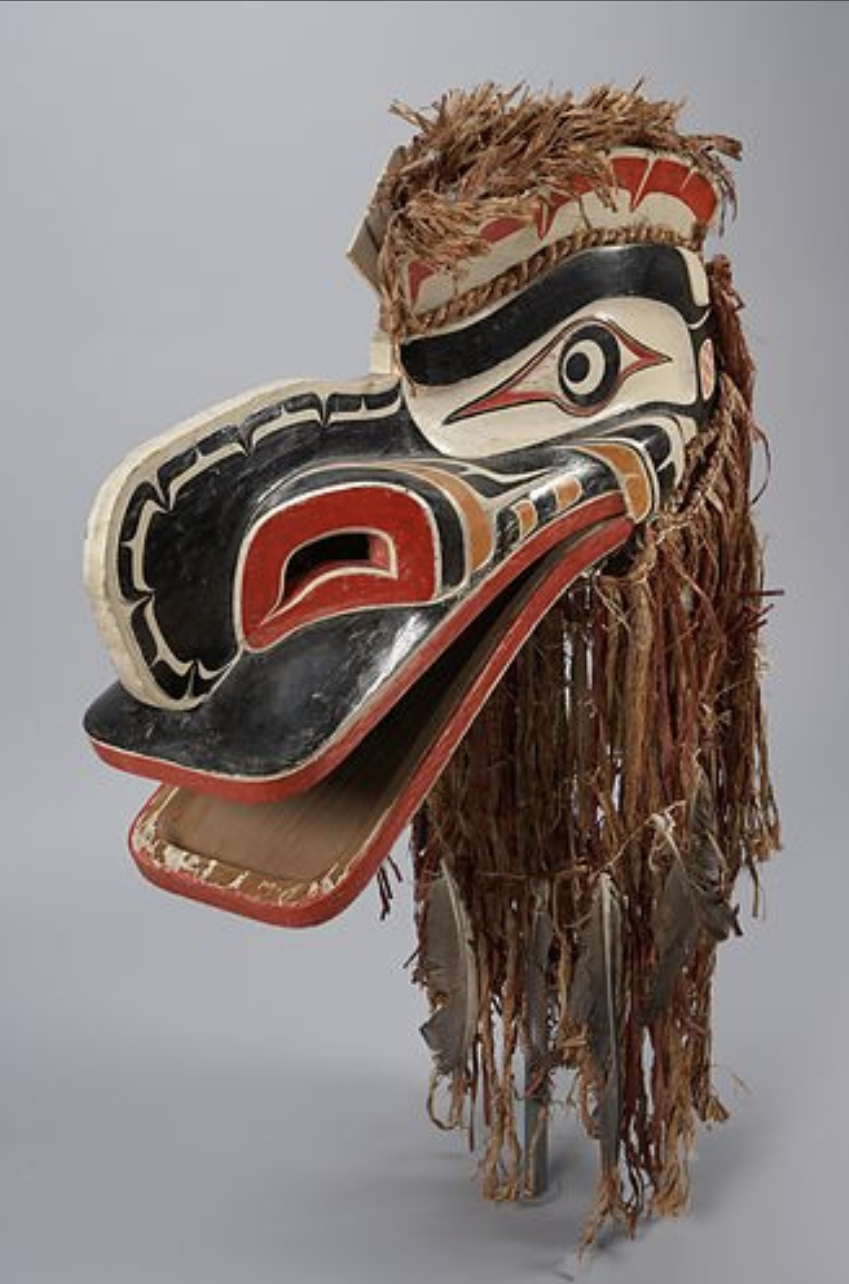Northwest Coast Indian/Native American
1/8
There's no tags or description
Looks like no tags are added yet.
Name | Mastery | Learn | Test | Matching | Spaced |
|---|
No study sessions yet.
9 Terms
Hamatsa Mask
A young man is possessed by a cannibal spirit, HAMATSA, the man-eater that lives at the north end world. The dance refers to the capture, taming, and return of the initiate
used in a dance, where the mask opens and closes
The dance was outlawed by the whites, then “relegalized” in 1936
Formline
style common to many Northwest native cultures, Tlingit, Haida, and Tsimshian, going back 2,000 years
balance of positive and negative shapes, rounded oval shapes
U-shapes with varying line widths
Negative Space
unpainted aspect of design in formline, and cut away in relief-carved designs
Positive Space
painted space on surface in formline most often painted in black or red
Finelines
lines are thin and appear near the thicker design, used for depth
Formline Traditional Colors
Colors were made using chewed salmon eggs to make a protein-based binder, mixed with ground-up minerals, making the mixture adhesive to wood
Black: charred wood & bones
Red: red ochre, vermilion (cinnabar), red lead
Blue: vivianite
Green: celadonite
White: kaolin, chalk, shells
Northwest Indigenous People
first contact with European settlers in 18th century
had a heavily wooded forest, with water surrounding

Crooked Beak Mask by Willie Seaweed
1873-1967, cedar bark/wood, feathers, fiber
worn by Hamasta dancer, made by a chief
Chilkat Robe
formline design woven into fabric, making the curved lines more complicated
women typically wove textiles while men carved and designed formlines
was worn in dance, causing the robe to move
a royal object in motion